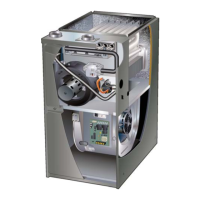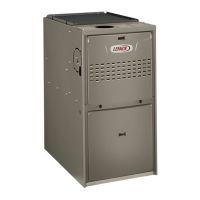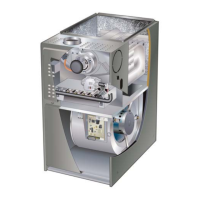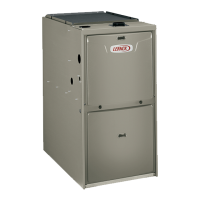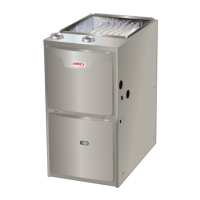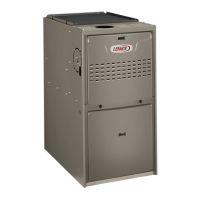Page 15
TABLE 3
OUTDOOR TERMINATION USAGE*
Input Size
Vent Pipe
Dia. in.
STANDARD CONCENTRIC
Flush
Mount Kit
Wall Kit
Wall Ring
Kit
Field
Fabricated
1-1.2 inch 2 inch 3 inch
2 inch 3 inch 2 inch
71M80
(US)
4
44W92
(CA)
69M29
(US)
4
44W92
(CA)
60L46 (US)
4
44W93 (CA)
51W11
(US)
51W12
(CA)
22G44
(US)
4
30G28
(CA)
44J40
(US)
4
81J20
(CA)
15F74
045
2
3
YES YES
1
YES
1
YES
5
YES
2
YES
2-1/2
3
YES YES
1
YES
1
YES
5
YES
2
YES
3
3
YES YES
1
YES
1
YES
5
YES
2
YES
070
2
3
YES YES
1
YES
1
YES
5
YES
2
YES
2-1/2
3
YES YES
1
YES
1
YES
5
YES
2
YES
3
3
YES YES
1
YES
1
YES
5
YES
2
YES
090
2
3
YES YES YES
5
YES YES YES
2-1/2
3
YES YES YES
5
YES YES YES
3
3
YES YES YES
5
YES YES YES
110
2 YES YES YES
5
YES YES YES
2-1/2 YES YES
5
YES YES YES
3 YES YES
5
YES YES YES
NOTE - Standard Terminations do not include any vent pipe or elbows external to the structure. Any vent pipe or elbows external to the structure must be included in total
vent length calculations. See vent length tables.
* Kits must be properly installed according to kit instructions.
1Requires eld-provided outdoor 1-1/2” exhaust accelerator.
2Concentric kits 71M80 and 44W92 include 1-1/2” outdoor accelerator, when used with 045 and 070 input models.
3 Flush mount kits 51W11 and 51W12 includes 1-1/2 in. outdoor exhaust accelerator, required when used with 045, 070 and 090 input models.
4 Termination kits 30G28, 44W92, 44W93 and 81J20 are certied to ULC S636 for use in Canada only.
5 See table 8 for vent accelerator requirements.
Joint Cementing Procedure
All cementing of joints should be done according to the
specications outlined in ASTM D 2855.
DANGER
DANGER OF EXPLOSION!
Fumes from PVC glue may ignite during system check.
Allow fumes to dissipate for at least 5 minutes before
placing unit into operation..
1 - Measure and cut vent pipe to desired length.
2 - Debur and chamfer end of pipe, removing any ridges
or rough edges. If end is not chamfered, edge of pipe
may remove cement from tting socket and result in
a leaking joint.
NOTE - Check the inside of vent pipe thoroughly for
any obstruction that may alter furnace operation.
3 - Clean and dry surfaces to be joined.
4 - Test t joint and mark depth of tting on outside of
pipe.
5 - Uniformly apply a liberal coat of PVC primer for PVC
or use a clean dry cloth for ABS to clean inside socket
surface of tting and male end of pipe to depth of
tting socket.
NOTE - Time is critical at this stage. Do not allow
primer to dry before applying cement.
6 - Promptly apply solvent cement to end of pipe and
inside socket surface of tting. Cement should be
applied lightly but uniformly to inside of socket. Take
care to keep excess cement out of socket. Apply
second coat to end of pipe.
7 - Immediately after applying last coat of cement to
pipe, and while both inside socket surface and end
of pipe are wet with cement, forcefully insert end of
pipe into socket until it bottoms out. Turn PVC pipe
1/4 turn during assembly (but not after pipe is fully
inserted) to distribute cement evenly. DO NOT turn
ABS or cellular core pipe.
NOTE - Assembly should be completed within 20
seconds after last application of cement. Hammer
blows should not be used when inserting pipe.

